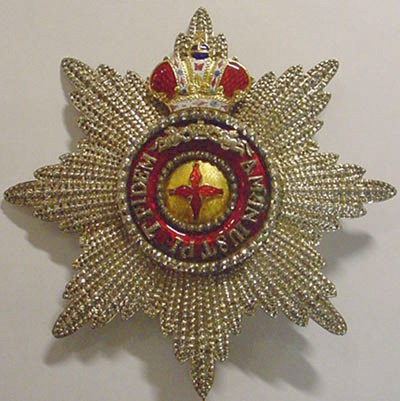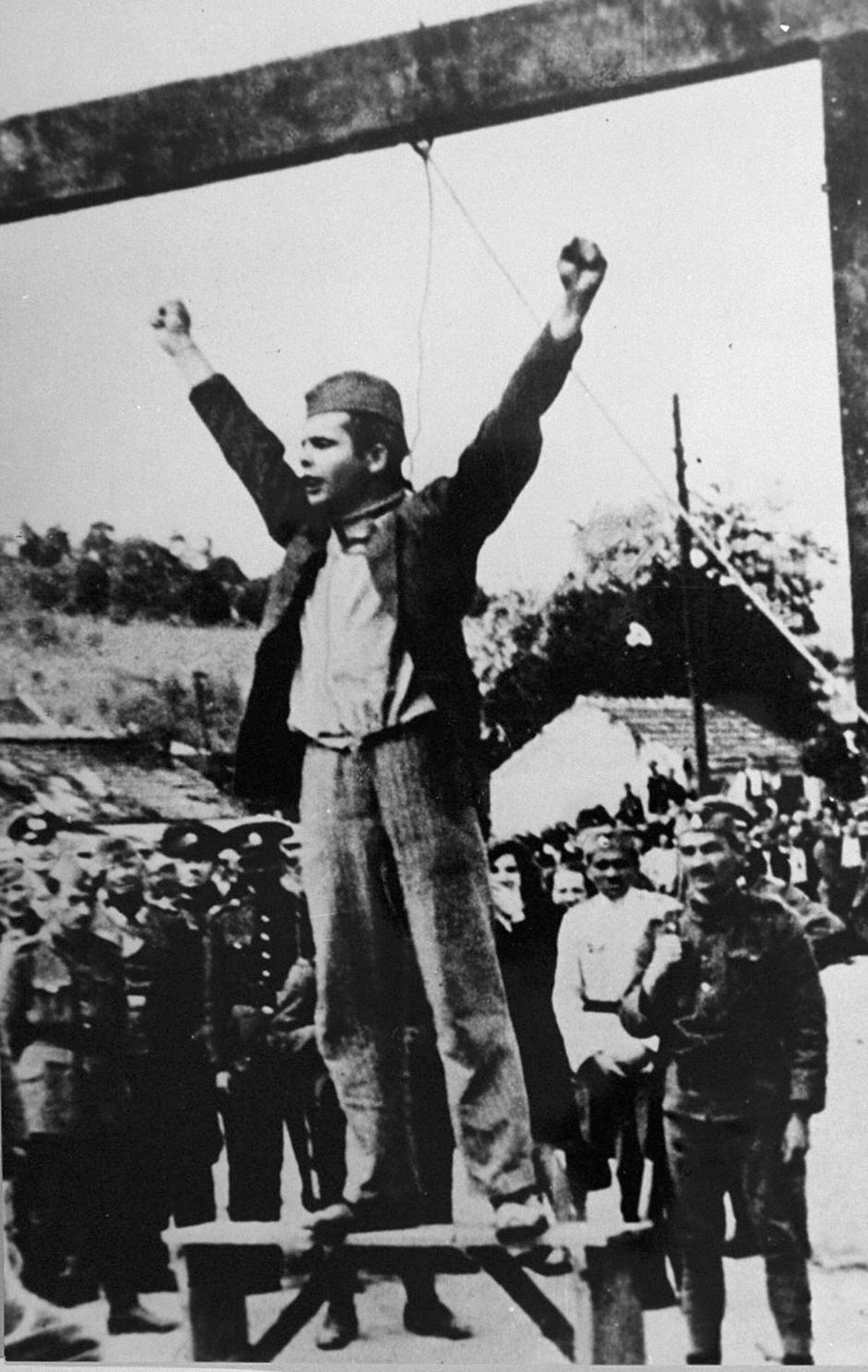|
Shkuro
Andrei Grigoriyevich Shkuro (russian: Андре́й Григо́рьевич Шкуро́, Ukrainian: Андрій Григорович Шкуро; 19 January 1887 ( O.S.: 7 January) – 17 January 1947) was a Lieutenant General (1919) of the White Army. Biography Early life He was born in the stanitsa of Pashkovskaya ( Пашковская, now part of Krasnodar) in Kuban Oblast into a Cossack family. Shkuro graduated from Cossack Sotnya of the Nikolaevsky Cavalry School in 1907 and served in the Kuban Cossack Host. In World War I Shkuro became the commander of a special partisan unit which executed several daring raids behind German lines. During the war, Shkuro was promoted to the rank of colonel for his heroic performance. Russian Civil War In the spring of 1918, after the establishment of the Bolshevik régime, Shkuro organized an anti-Bolshevik Cossack unit in the area of Batalpashinsk in the Caucasus. In May and June 1918 he raided Stavropol, Yessentuki and Kisl ... [...More Info...] [...Related Items...] OR: [Wikipedia] [Google] [Baidu] |
Kuban Cossack Host
Kuban Cossacks (russian: кубанские казаки, ''kubanskiye kаzaki''; uk, кубанські козаки, ''kubanski kozaky''), or Kubanians (russian: кубанцы, ; uk, кубанці, ), are Cossacks who live in the Kuban region of Russia. Most of the Kuban Cossacks are descendants of different major groups of Cossacks who were re-settled to the western Northern Caucasus in the late 18th century (estimated 230,000 to 650,000 initial migrants). The western part of the host (Taman Peninsula and adjoining region to the northeast) was settled by the Black Sea Cossack Host who were originally the Zaporozhian Cossacks of Ukraine, from 1792. The eastern and southeastern part of the host was previously administered by the Khopyour and Kuban regiments of the Caucasus Line Cossack Host and Don Cossacks, who were re-settled from the Don from 1777. The Kuban Cossack Host (Кубанское казачье войско), the administrative and military unit composed of K ... [...More Info...] [...Related Items...] OR: [Wikipedia] [Google] [Baidu] |
Krasnodar
Krasnodar (; rus, Краснода́р, p=krəsnɐˈdar; ady, Краснодар), formerly Yekaterinodar (until 1920), is the largest city and the administrative centre of Krasnodar Krai, Russia. The city stands on the Kuban River in southern Russia, with a population of 1,099,344 residents, and up to 1.2 million residents in the Urban Okrug. In the past decade Krasnodar has experienced rapid population growth, rising to become the thirteenth-largest city in Russia, and the second-largest city in southern Russia, as well as the Southern Federal District. The city originated in 1793 as a fortress built by the Cossacks, and became a trading center for southern Russia. The city sustained heavy damage in World War II but was rebuilt and renovated after the war. Krasnodar is a major economic hub in southern Russia; In 2012, ''Forbes'' named Krasnodar the best city for business in Russia. Krasnodar is home to numerous sights, including the Krasnodar Stadium. Its main airport is Kr ... [...More Info...] [...Related Items...] OR: [Wikipedia] [Google] [Baidu] |
Order Of Saint Anna
The Imperial Order of Saint Anna (russian: Орден Святой Анны; also "Order of Saint Anne" or "Order of Saint Ann") was a Holstein ducal and then Russian imperial order of chivalry. It was established by Karl Friedrich, Duke of Holstein-Gottorp, on 14 February 1735, in honour of his wife Anna Petrovna, daughter of Peter the Great of Russia. Originally, the Order of Saint Anna was a dynastic order of knighthood; but between 1797 and 1917 it had dual status as a dynastic order and as a state order. The Order of St. Anna continued to be awarded after the revolution by Grand Duke Kirill Vladimirovich, Grand Duke Vladimir Kirillovich, and Grand Duchess Maria Vladimirovna. Today, the Russian Imperial Order of St. Anna, awarded by Grand Duchess Maria Vladimirovna is recognized as an order of chivalry by the privately operated ICOC as a continuation of the pre-Revolutionary order, and has been approved for wear with military uniform by the Russian Federation, but not by s ... [...More Info...] [...Related Items...] OR: [Wikipedia] [Google] [Baidu] |
Order Of The Bath
The Most Honourable Order of the Bath is a British order of chivalry founded by George I of Great Britain, George I on 18 May 1725. The name derives from the elaborate medieval ceremony for appointing a knight, which involved Bathing#Medieval and early-modern Europe, bathing (as a symbol of purification) as one of its elements. The knights so created were known as "Knights of the Bath". George I "erected the Knights of the Bath into a regular Order (honour), Military Order". He did not (as is commonly believed) revive the Order of the Bath, since it had never previously existed as an Order, in the sense of a body of knights who were governed by a set of Statute, statutes and whose numbers were replenished when vacancies occurred. The Order consists of the Sovereign (currently Charles III, King Charles III), the :Great Masters of the Order of the Bath, Great Master (currently vacant) and three Classes of members: *Knight Grand Cross (:Knights Grand Cross of the Order of the Bath ... [...More Info...] [...Related Items...] OR: [Wikipedia] [Google] [Baidu] |
Partisan (military)
A partisan is a member of an irregular military force formed to oppose control of an area by a foreign power or by an army of military occupation, occupation by some kind of insurgent activity. The term can apply to the field element of resistance movements. The most common use in present parlance in several languages refers to Resistance during World War II, occupation resistance fighters during World War II, especially under the Yugoslav Partisans, Yugoslav partisan leader Josip Broz Tito. History before 1939 The initial concept of partisan warfare involved the use of militia , troops raised from the local population in a war zone (or in some cases regular forces) who would operate behind enemy front line , lines to disrupt communications, seize posts or villages as forward-operating bases, ambush convoys, impose war taxes or contributions, raid logistical stockpiles, and compel enemy forces to disperse and protect their base of operations. George Satterfield has analyse ... [...More Info...] [...Related Items...] OR: [Wikipedia] [Google] [Baidu] |
Nikolaevsky Cavalry School
Nikolayevsky (masculine), Nikolayevskaya (feminine), or Nikolayevskoye (neuter) may refer to: *Yuri Nikolaevsky (1937–2004), Soviet/Ukrainian chess player *Mykolaiv Oblast Mykolaiv Oblast ( uk, Микола́ївська о́бласть, translit=Mykoláyivsʹka óblastʹ, ), also referred to as Mykolaivshchyna ( uk, Микола́ївщина, Mykoláivshchyna, ) is an oblast (province) of Ukraine. The administra ... (''Nikolayevskaya oblast''), an oblast of Ukraine * Nikolayevsky District (other), several districts in the countries of the former Soviet Union * Nikolayevskoye Urban Settlement, several municipal urban settlements in Russia * Nikolayevsky (rural locality) (''Nikolayevskaya'', ''Nikolayevskoye''), several rural localities in Russia * Nikolayevsky Rail Terminal (other), several rail terminals in Russia * Nikolayevsky Fortress Infantry Regiment, fortress infantry regiments of the Imperial Russian Army See also * Nikolayevsk (other) * Niko ... [...More Info...] [...Related Items...] OR: [Wikipedia] [Google] [Baidu] |
Cossack
The Cossacks , es, cosaco , et, Kasakad, cazacii , fi, Kasakat, cazacii , french: cosaques , hu, kozákok, cazacii , it, cosacchi , orv, коза́ки, pl, Kozacy , pt, cossacos , ro, cazaci , russian: казаки́ or , sk, kozáci , uk, козаки́ are a predominantly East Slavic Orthodox Christian people originating in the Pontic–Caspian steppe of Ukraine and southern Russia. Historically, they were a semi-nomadic and semi-militarized people, who, while under the nominal suzerainty of various Eastern European states at the time, were allowed a great degree of self-governance in exchange for military service. Although numerous linguistic and religious groups came together to form the Cossacks, most of them coalesced and became East Slavic-speaking Orthodox Christians. The Cossacks were particularly noted for holding democratic traditions. The rulers of the Polish-Lithuanian Commonwealth and Russian Empire endowed Cossacks with certain spe ... [...More Info...] [...Related Items...] OR: [Wikipedia] [Google] [Baidu] |
Stanitsa
A stanitsa ( rus, станица, p=stɐˈnʲitsə; uk, станиця, stanytsya) is a village inside a Cossack host ( uk, військо, viys’ko; russian: казачье войско, kazach’ye voysko, sometimes translated as "Cossack Army"). Stanitsas (russian: станицы, stanitsy) — Cossack military settlements — were the primary unit of Cossack hosts. While the word ''stanitsa'' survives in modern usage, the stanitsa as a social system in its historic context was effectively destroyed in the aftermath of the 1917 Russian revolution, when the Russian Civil War (1917–1922) and subsequent collectivisation (1928–1940) of the land by the state in the Stalinist period and the Holodomor (1932–1933) destroyed the culture and the economic foundations of stanitsas. Historical definition Historically, the stanitsa was a unit of economic and political organisation of the Cossack peoples — primarily in the southern regions of the Russian Empire. Each stanit ... [...More Info...] [...Related Items...] OR: [Wikipedia] [Google] [Baidu] |
White Army
The White Army (russian: Белая армия, Belaya armiya) or White Guard (russian: Бѣлая гвардія/Белая гвардия, Belaya gvardiya, label=none), also referred to as the Whites or White Guardsmen (russian: Бѣлогвардейцы/Белогвардейцы, Belogvardeytsi, label=none), was a common collective name for the armed formations of the White movement and anti-Soviet governments during the Russian Civil War. They fought against the Red Army of the Bolsheviks. When it was created, the structure of the Russian Army of the Provisional Government period was used, while almost every individual formation had its own characteristics. The military art of the White Army was based on the experience of the First World War, which, however, left a strong imprint on the specifics of the Civil War. History The name "White" is associated with white symbols of the supporters of the pre-revolutionary order, dating back to the time of the French Revolution, ... [...More Info...] [...Related Items...] OR: [Wikipedia] [Google] [Baidu] |
Julian Calendar
The Julian calendar, proposed by Roman consul Julius Caesar in 46 BC, was a reform of the Roman calendar. It took effect on , by edict. It was designed with the aid of Greek mathematicians and astronomers such as Sosigenes of Alexandria. The calendar became the predominant calendar in the Roman Empire and subsequently most of the Western world for more than 1,600 years until 1582, when Pope Gregory XIII promulgated a minor modification to reduce the average length of the year from 365.25 days to 365.2425 days and thus corrected the Julian calendar's drift against the solar year. Worldwide adoption of this revised calendar, which became known as the Gregorian calendar, took place over the subsequent centuries, first in Catholic countries and subsequently in Protestant countries of the Western Christian world. The Julian calendar is still used in parts of the Eastern Orthodox Church and in parts of Oriental Orthodoxy as well as by the Berbers. The Julian calenda ... [...More Info...] [...Related Items...] OR: [Wikipedia] [Google] [Baidu] |
Ukrainian Language
Ukrainian ( uk, украї́нська мо́ва, translit=ukrainska mova, label=native name, ) is an East Slavic language of the Indo-European language family. It is the native language of about 40 million people and the official state language of Ukraine in Eastern Europe. Written Ukrainian uses the Ukrainian alphabet, a variant of the Cyrillic script. The standard Ukrainian language is regulated by the National Academy of Sciences of Ukraine (NANU; particularly by its Institute for the Ukrainian Language), the Ukrainian language-information fund, and Potebnia Institute of Linguistics. Comparisons are often drawn to Russian, a prominent Slavic language, but there is more mutual intelligibility with Belarusian,Alexander M. Schenker. 1993. "Proto-Slavonic," ''The Slavonic Languages''. (Routledge). pp. 60–121. p. 60: " hedistinction between dialect and language being blurred, there can be no unanimity on this issue in all instances..."C.F. Voegelin and F.M. Voegelin. 19 ... [...More Info...] [...Related Items...] OR: [Wikipedia] [Google] [Baidu] |





_(cropped).jpg)
